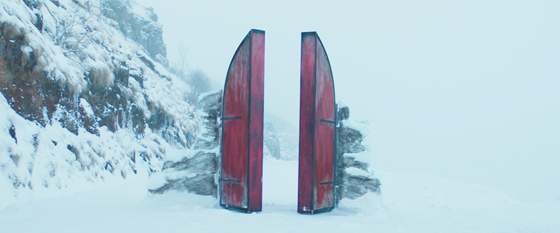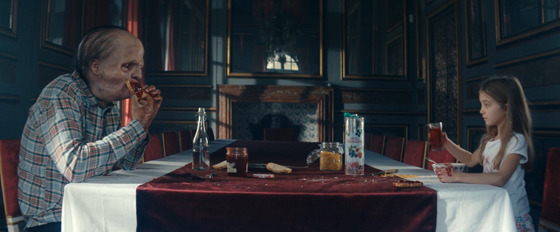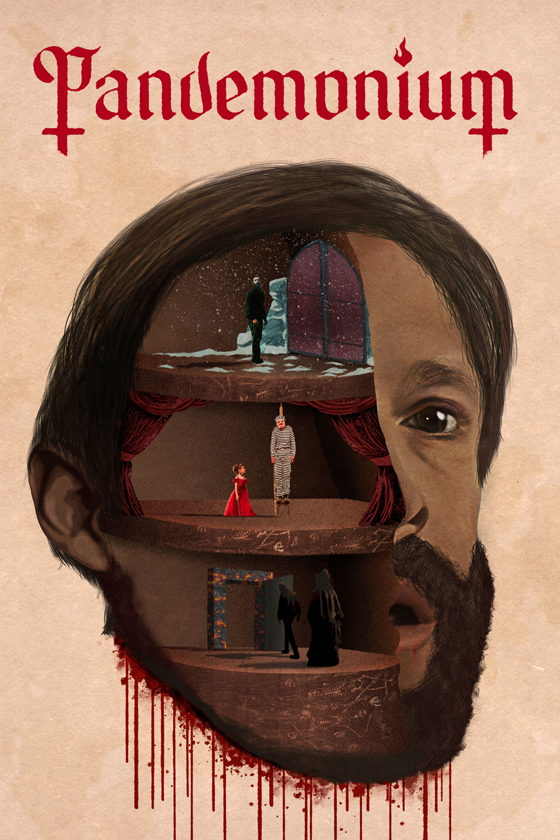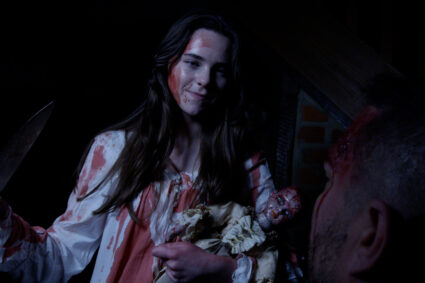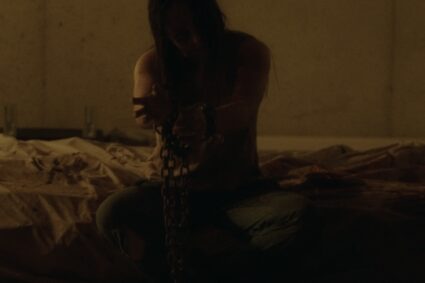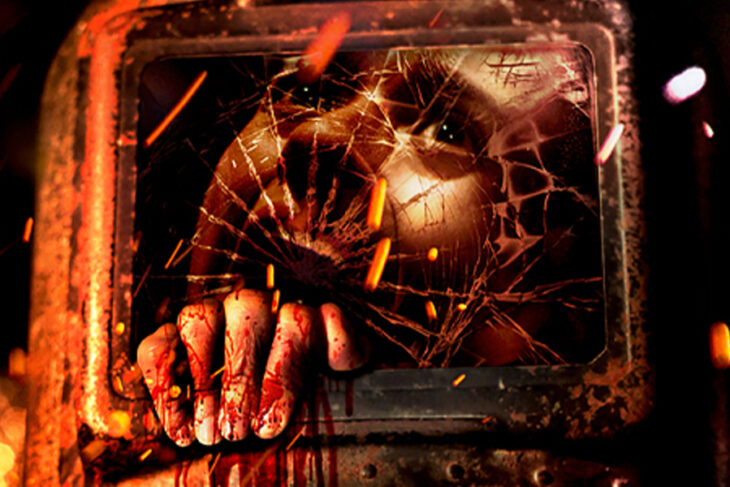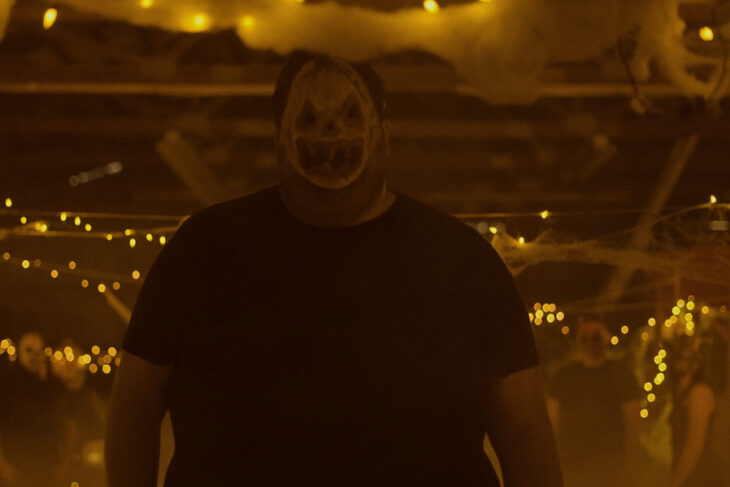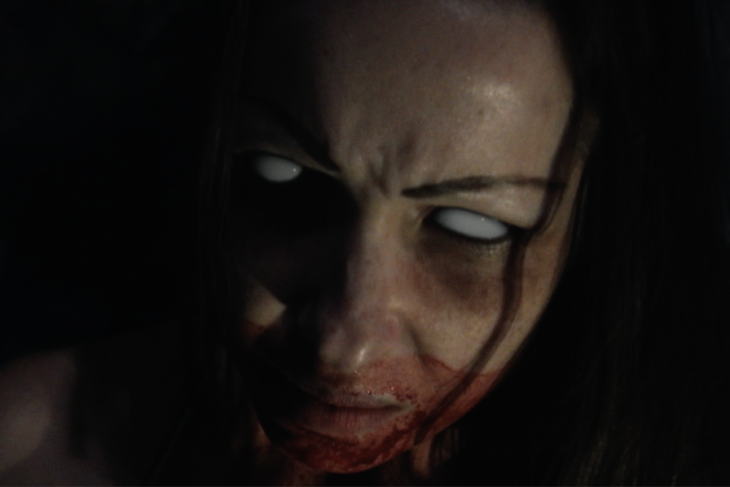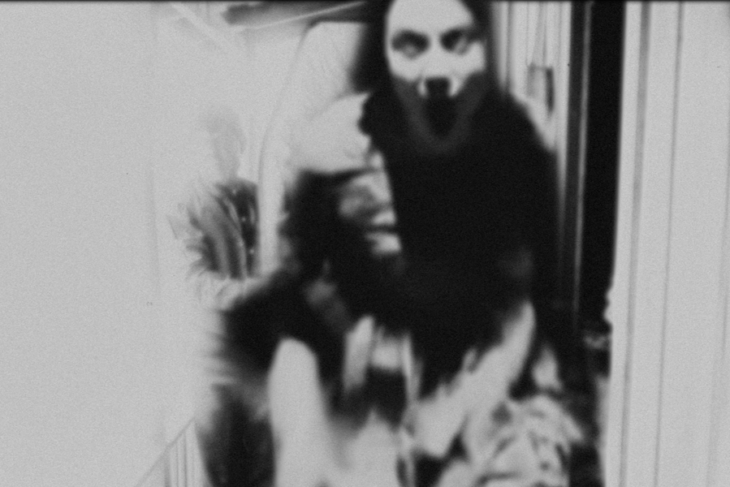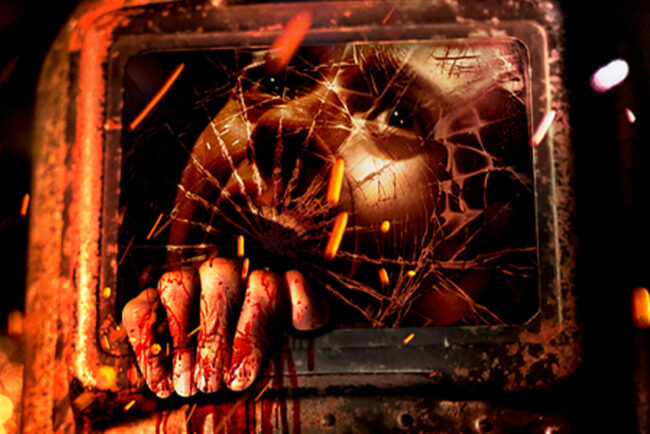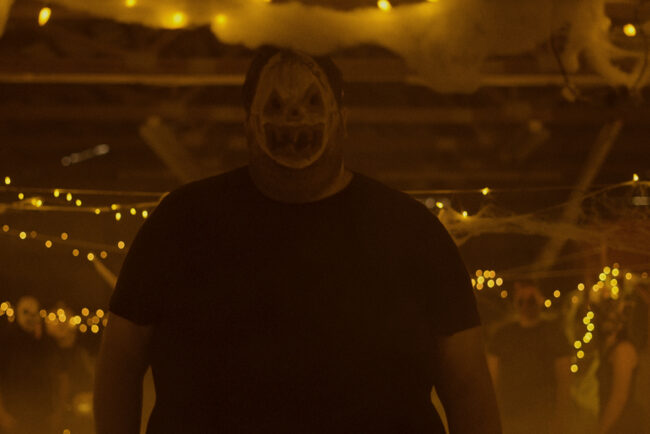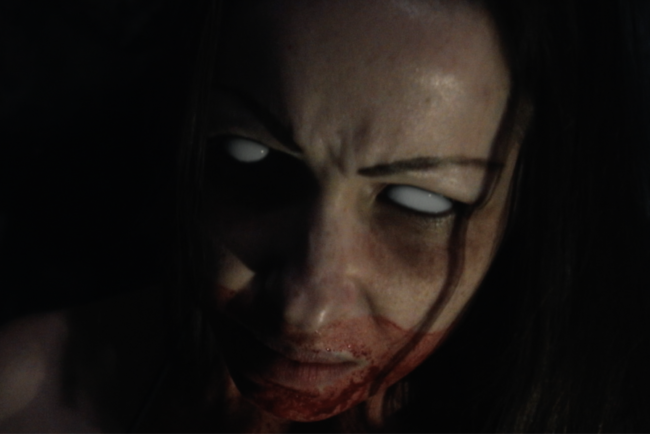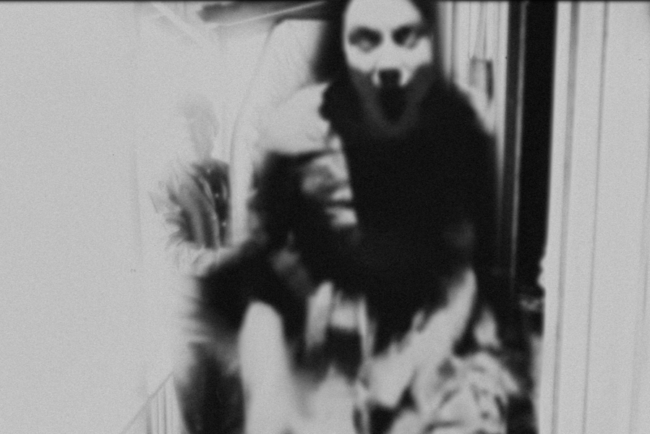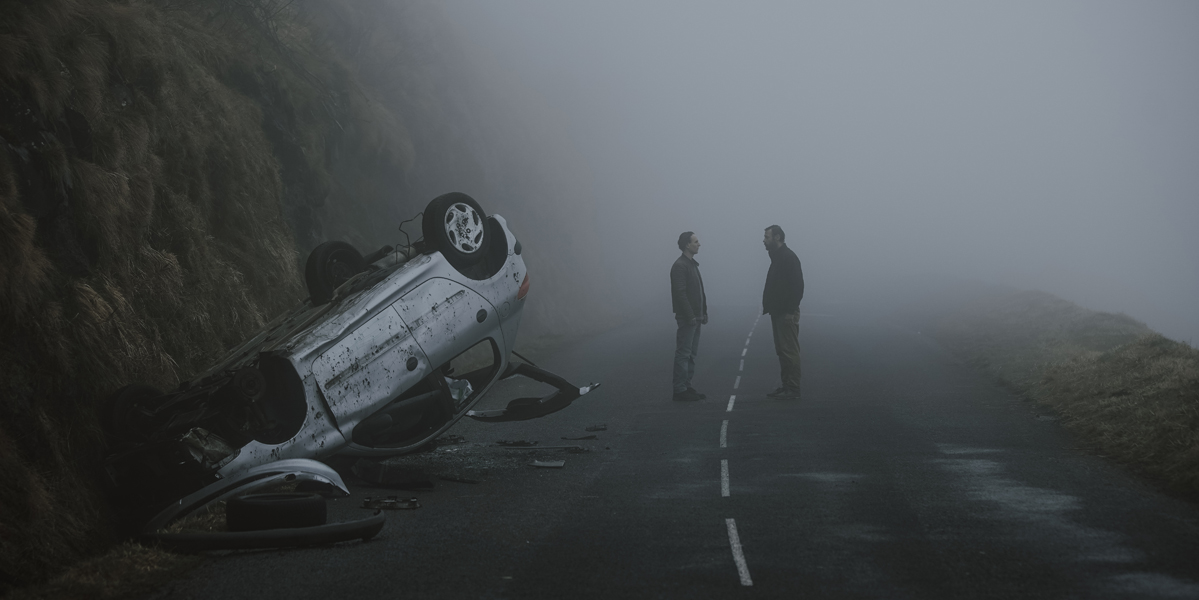
What exactly is Hell? According to AC/DC, it ain’t a bad place to be, but that contradicts all that we know of it. Is it the eternally burning netherworld of the Bible, where red guys with pitchforks poke and prod you? Or is it something even worse, even more diabolically clever? The endless bloody tortures of the Hellraiser movies certainly don’t look like a picnic. The great poet Dante thought it was freezing cold instead of horrendously hot … but doesn’t extreme cold feel like heat, anyway?
I always thought the Twilight Zone episode “A Nice Place to Visit” had a pretty good take on it. In that one, Hell was disguised as Heaven, where a ruthless small-time crook had all the money, babes, and booze he wanted. So much and in such profusion that crushing boredom soon set in—a boredom that would last for eternity. Too much of a good thing, you see.
In many of the modern concepts of Hell, it can be a place of utter loneliness and desolation, an eternity by yourself. Or a place where only negative emotions exist, and people relive their mistakes forever.
In the new French movie Pandemonium, we get a smorgasbord version of Hell that is all the above and more. It is a truly awful dimension, and we get to learn all about it thanks to director Quarxx and a talented group of actors. This is a movie with a lot of moving parts, that starts out almost as a dark comedy, transforms into a nasty fairytale and a mind-numbing exploration of grief, and finally morphs into an utterly hopeless and truly devastating finale.
This is not a cheap or low budget film. It has every sign of being a major production instead of the usual direct-to-streaming potboiler. In some ways, it can be considered an art film in the great French tradition. It’s an anthology movie with a vastly different look and feel to each of the segments. Although the movie does have devils and monsters, they are not the main focus, and this is in no way a jump-scare type of film. Does it all come together? I have some major issues with some of it, but I’ve got a ton of respect for what Quarxx tries to do here.
Let us now descend into the depths of Pandemonium (some spoilers ahead).
We begin in the stark, snowy habitat of a rugged Alpine road. It looks like something in the Swiss Alps but there is something just a little off to the lighting and the sky that suggests it is not exactly an earthly place. A terrible car accident has just taken place and we see the wreckage. We meet Nathan (Hugo Dillon), a young man who finds himself in confusion standing in the road outside the wreck. It is deathly quiet here. Nathan knows it was his car in the accident, but he doesn’t know how he got out of the mangled metal without a scratch. He should at least be banged up.
Soon Nathan encounters Daniel (Arben Bajraktaraj), the driver of the other car involved in the wreck. He also seems to be unharmed. But Daniel, who apparently has been on the accident site longer than Nathan, seems to know a lot more about what’s going on. After some banal chit-chat, he informs Nathan that they are both dead, killed in the wreck. Nathan is in disbelief and thinks Daniel is some kind of nut … until Daniel invites him to look inside the wreckage.
The two men, apparently disembodied spirits, now engage in an absurd and blackly comic dialogue about the nature of the afterlife. This whole opening segment is right out of Twilight Zone, and I almost expected chain-smoking Rod Serling to appear with a quip at any second. During the discussion, the subject of Heaven and Hell comes up. Daniel, who seems somewhat disingenuous and condescending, appears to know more about things than Nathan, who is in denial about his death.
We gradually learn that Nathan has some troubling behavior in his background such as perhaps being responsible for killing his wife. He protests that it is a mercy killing because his wife was terminally ill and suffering. Suddenly two huge doors materialize in the road. Daniel says these must be the doors to Heaven and Hell…they are in the limbo of afterlife and must now move on to whatever sphere awaits them. With Nathan’s guilt about his wife, Daniel says it’s obvious where he’s going to wind up.
But Daniel has some secrets of his own. He was driving drunk when Nathan hit him. And suddenly the two men hear the voice of a little girl, who has joined them on the lonely road. She was riding her bike and was also killed in the accident, and it seems Daniel is more at fault for this. But maybe the little girl is not as innocent as she appears, as well?
The absurdity of the situation reaches dark heights as Daniel and Nathan both resist their fates. Daniel hears sweet music behind one door and horrific screams behind the other. Nathan hears nothing and neither does the girl. A battle ensues and Daniel and the girl are both forced through one of the doors, leaving Nathan by himself. He refuses to go through either door … until a gigantic demonic entity appears and shepherds him towards what must be the door to hell. This demonic being is a nebulous creature of smoke and fire, a well realized CGI creation and the only really blatant use of CGI in the film. Nathan finally goes through the door and disappears.
The movie now abruptly changes gears in a whiplash-like fashion, and we are suddenly thrust into a completely different story. Until this point, I was unaware this was an anthology movie. We later find out the reason for why it unfolds in such a way.
We are now in an immensely huge mansion and in the company of a beautiful little girl named Nina (Manon Maindivide) who apparently has this place to herself. Or maybe not, because we see the bloody bodies of Mom and Dad … dead as a doornail. Is Nina responsible? She doesn’t seem to care at all that her folks are dead and seems to think their bodies are just debris to be cleaned up. It doesn’t take us long to realize that this is one twisted, self-absorbed brat of a little girl. In fact, Nina may just be the baddest little girl ever portrayed in cinema.
Or maybe it was her playmate Tony the Monster (Carl Laforet) that’s responsible for the murders. Tony is a grotesquely pathetic creature, and he seems to be a helpless scapegoat for Nina’s evil acts. Most of the time….
This second sequence resembles nothing so much as a pitch-black fairytale. There’s no way that Nina’s home can be a real place, because it seems to be the size of a city, full of dark corridors, huge spaces and even a theater stage where Tony is apparently made to hang himself for murdering Nina’s parents. Or so it appears, for he soon turns up again. Tony is a great creation of practical make-up effects … we sympathize with this poor creature. Except for when he’s overcome with murderous bloody rage.
Related Content:
The Acid King: The Birth of America’s Satanic Panic Movie Review
THE BLOOD ON SATAN’S CLAW: “A Fiend is Among Us!”
Late Night with The Devil Movie Review
Nothing in Nina’s house is what it seems, but the only certainty is that SHE is in complete control of everything. What she does to her little sister Claire is a total horror. And apparently, she will rule her domain as a princess forever.
What’s the purpose of this sequence? Well, we suddenly discover that Nathan has just experienced Nina’s world vicariously. Nathan is in hell now and part of his torment is to experience the suffering of others in this dreadful realm.
My question here is: who’s the real victim? If the purpose of Hell is to punish sinners, Nina seems to get off scot-free. She feels no remorse for her family and seems to be in complete control of her situation. Maybe she’s a kid so bad that even the Devil can’t get the best of her. Or maybe … this is Tony’s Hell instead of Nina’s. Is Nina his eternal tormentor? Maybe so. Or maybe this is even the hell of Nina’s parents. We don’t know for sure. And by the end of the movie, it probably doesn’t matter.
Nathan now has a guide through Hell, a hooded fiend called Norgul. Dante had Virgil to show him the ins and outs of the Inferno and Nathan has Norgul. Norgul is hardly the genteel Roman poet … he is blunt beyond belief and has no sympathy for his charge. Nathan has only begun to witness the suffering of others so it’s time for the next segment to begin.
The third segment is extremely difficult to watch. It’s not the dark fairytale of Nina’s story or the Twilight Zone-ish scenario of Nathan’s post-crash existence, but rather it’s grief and tragedy magnified to such a point that the mind cracks under the strain. This story’s rooted in the reality of suicide, neglect, and childhood bullying … things that happen every day. It’s a real-life Hell that many people face for real.
It opens in the home of Julia (Ophelia Kolb), who is overcome by some unfathomable sorrow. She seems suspended between massive grief and an insincere normalcy. Soon we discover the source of her tragedy … her teenaged daughter Chloe (Sidwell Weber) has committed suicide by slashing her wrists in the bathtub. The shock of this event has snapped Julia’s mind … she drags Chloe’s body from the tub, dresses it in fresh clothes and puts it in a chair, ready for breakfast. Julia asks Chloe if maybe it’s time for them to take a vacation in the country, get away from it all. When no answer is forthcoming from the corpse, Julia’s composure breaks, and she is wracked by sobs.
We peer into the past of these characters. Julia and Chloe had just settled into a new neighborhood. Pretty Chloe is unmercifully bullied at school by a coven of evil teen girls. This scene of bullying is hard to watch because it’s all too real.
Chloe has cracked from the strain and tells her mom in a barely audible voice that she can’t take any more of this hell, there must be an end. But Julia is a self-absorbed career woman who’s always on the job. She’s a single mom as well and we get the impression that the split with her husband was none too pleasant. She tells Chloe to tough it out just a little longer because this is something everybody goes through. She will get through it. With that, she’s off to work…
We know what happened from there. Now Julia keeps up the pretense that Chloe is alive, even when a concerned neighbor arrives and asks if anything’s wrong. Julia finally gets Chloe’s body into her car and off they go to “vacation”. But once again, reality breaks through to Julia and she recalls all the times she could have listened to her child but didn’t. If this isn’t a real-life Hell, I don’t know what is.
It winds up with the car slamming into a tree full blast. But there is still no relief for Julia. This whole segment is rough, to say the least. Ophelia Kolb is excellent as Julia and it’s hard not to feel some sympathy for her. She is a neglectful mother, but not really an abusive or hateful one. She doesn’t beat or insult Chloe … it’s the same case of benign indifference that many parents probably have in these days of multiple careers and social media madness. If Julia is to experience this over and over for eternity, it seems to be a harsher punishment than burning in hellfire or freezing in ice.
And our friend Nathan has experienced it all with her. That’s part of his Hell. “I can’t take this, nobody can take this,” he moans to Norgul. Well, now he’s going to learn just how dreadful and hopeless Hell really is. Norgul takes Nathan to a dismal, red lit cavern. His spirit will dwell in this place in isolation for the next 4000 years.
“4000 years! You can’t be serious.” Nathan protests.
Norgul’s answer is stark. “The 4000 years is just the start. That’s to break your mind and ego down. At the end of that time, then you will REALLY enter Hell. And that will last for eternity.” And there’s one other revelation he makes to Nathan, the worst one of all, but I will leave you to discover what that is. A bleaker fate is impossible to imagine.
As Nathan cries in disbelief, Norgul leaves, saying “see you soon.” We then discover he was not totally honest when he told Nathan he would be alone. He will have some company. His name is Billy.
There’s an even darker and stranger ending to the movie, something that comes out of left field, but which certainly doesn’t lighten the darkness any. Pandemonium starts in an almost playful manner, but it ends in the unending oblivion of a true Hell.
Pandemonium is an impressive but far from flawless movie. Although I was hypnotically drawn to watch, I always had the feeling something was missing. That ending I described above was particularly odd.
Director Quarxx is a talented man without a doubt. Each segment of this film has a completely different look and feel to it, and all are successful. You would almost think that each was directed by a different man. The utter realism of Julia’s story, done with no special effects of any kind, is quite at odds with the del Toro-like fantasy world of Nina’s story. And the final sequence almost looks like something Brazil’s Coffin Joe could have cooked up. Full kudos to Quarxx for his visual sense. I also appreciate that there were no cliched jump scares anywhere to be found.
The effects are equally restrained but well done. Demons like Tony, Norgul and Billy are all done with classic prosthetic make-up and most effectively, too. There’s some well-done gore, but not a lot of it. Only the fire demon that sends Nathan through the door to Hell is CGI. And a rather different look, as well.
It’s Julia’s story that leaves the deepest mark. It hits too close to home … you almost feel ashamed watching Chloe’s torment and Julia’s overwhelming grief. What happens to them feels monumentally unfair in a cosmic sense. Just like it also seems unfair for Nina to get away with her atrocious crimes. The exact point of that segment still eludes me. Does Nathan deserve his fate? Does Daniel? Does anybody?
If Pandemonium shows what really awaits us after death, the movie itself is a kind of Hell. Flaws or not, it’s a fascinating piece of cinema.


